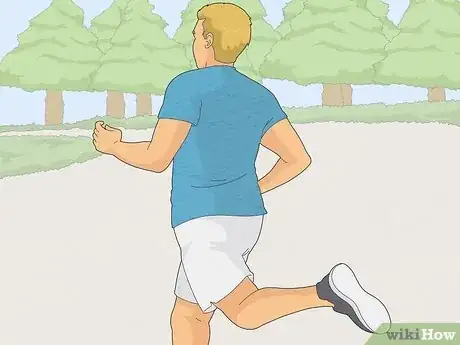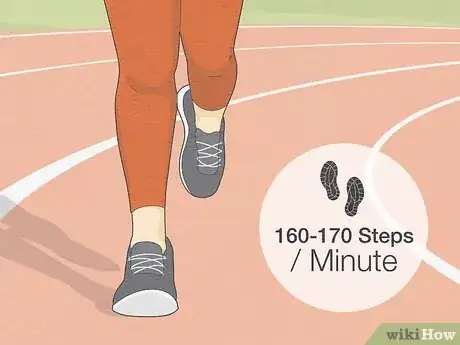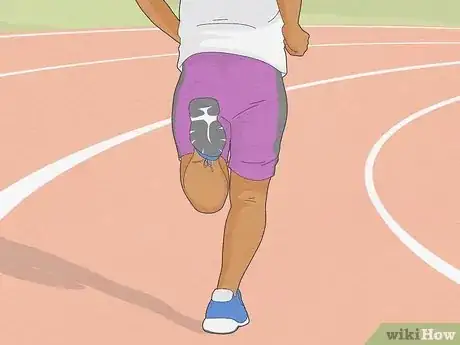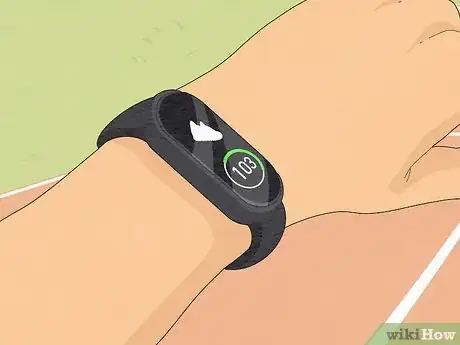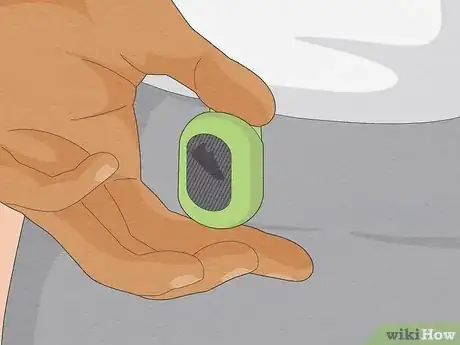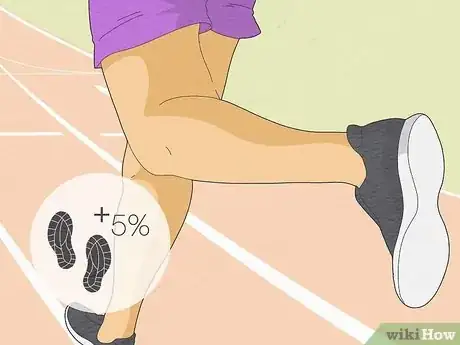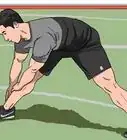This article was co-authored by Kai Ng and by wikiHow staff writer, Luke Smith, MFA. Kai Ng is a USATF and RRCA Certified Running Coach at Run Coach Kai. Kai has competed in over 55 races and over 15 marathons, and has trained with 16x USA and World record holder Patti Catalano Dillonso. He specializes in coaching runners of all levels and showing people that everyone can be a runner. Kai is committed to helping his clients reach their goals by showing them how to run with proper form and holding them accountable to train consistently.
There’s no shortcut to becoming a better runner, but paying attention to your running cadence will get you pretty far. What is running cadence? How do you change it? Why does it even matter? Excellent questions. We’ll give you the rundown on cadence and how to measure it, as well as coach you through how to increase your cadence. So lace up those shoes and boot up that workout playlist, because we’re about to pick up the pace.
Things You Should Know
- Your running cadence is the number of steps you take per minute. A faster running cadence is associated with better form, efficiency, and reduced risk of injury.
- Measure your running cadence by counting how many steps you take in a minute while running, or by using a running watch or foot pad.
- Increase your running cadence by practicing sprints, focusing on keeping your torso upright, and listening to high-BPM music or a digital metronome.
Steps
What is running cadence?
-
1Your running cadence is the number of steps you take per minute. In other words, it’s your stride rate, or many steps it takes you to cover a certain distance. Many runners use running cadence as a loose indicator of their efficiency; studies have shown that faster cadences use less energy and reduce the risk of injury while running.[1]
- A faster cadence has been linked with fewer hip and knee injuries, since the increased stride rate makes for less impact force on the knees and better aligned hips.
-
2Running cadence is different for every runner. It makes sense—tall people have longer legs, which makes for longer strides, which mean a lower natural running cadence. The reverse is true for shorter people, whose naturally shorter strides make for a higher running cadence.[2]
- There’s no correlation between a runner’s sex, age, or weight and their cadence.
Advertisement -
3Running cadence varies by distance and event. Sprinters will naturally have higher cadences while they sprint, since their feet are hitting the ground at a faster rate. Similarly, long-distance runners tend to have slower cadences, since they’re focusing on pacing themselves for the long haul. On top of that, your own running cadence will probably vary as you participate in different events with different physical demands.[3]
What cadence should I run at?
-
1Aim for a cadence of 160-170 steps per minute. In general, people who run a mile in fewer than 10 minutes should aim for a cadence of 160, while people who run a mile in more than 10 minutes should aim for a cadence closer to 170. Keep in mind that these numbers are in no way definite or certain for every runner, though! They’re simply a useful target to help you improve your own cadence.[4]
-
2Remember that there's no universal or ideal running cadence. Traditionally, the target or “goal” running cadence used by coaches and trainers was about 180 steps per minute. While this is an admirable target, recent studies and research suggest it shouldn’t be a catch-all number for every runner and every event.[5] Instead, focus on achieving a cadence that feels natural and comfortable for you.
- It’s true that the average cadence of many top runners is around 180, but the variation of these runners’ cadences is drastic, ranging from 155-203. Which is to say, don’t regard the average as your own personal target; even top runners have varying cadences.
References
- ↑ https://runrepeat.com/guides/what-is-running-cadence
- ↑ https://www.220triathlon.com/training/run-training/is-cadence-important-for-running/
- ↑ https://www.triathlonvibe.com/training/whats-the-best-running-cadence/
- ↑ https://www.triathlonvibe.com/training/whats-the-best-running-cadence/
- ↑ https://www.220triathlon.com/training/run-training/is-cadence-important-for-running/
- ↑ https://runnerclick.com/best-cadence-watches-reviewed/
- ↑ https://runrepeat.com/guides/what-is-running-cadence
- ↑ https://corydonphysiotherapy.com/what-is-running-cadence/
- ↑ https://corydonphysiotherapy.com/what-is-running-cadence/

